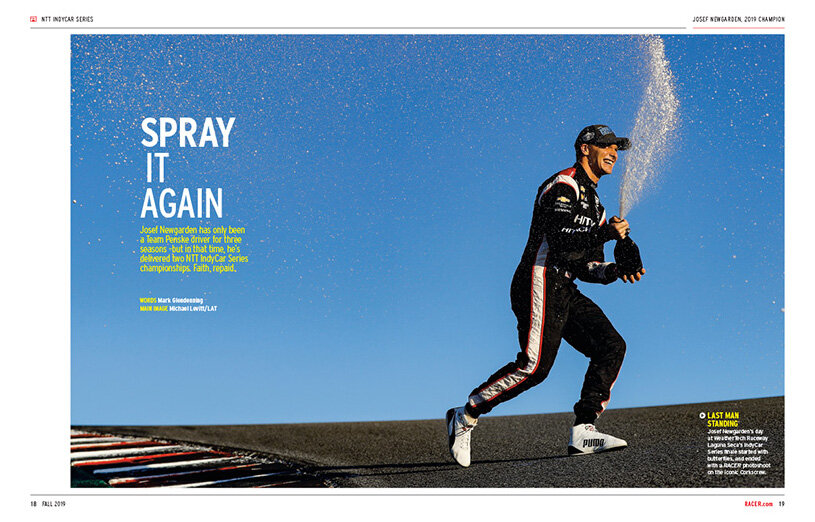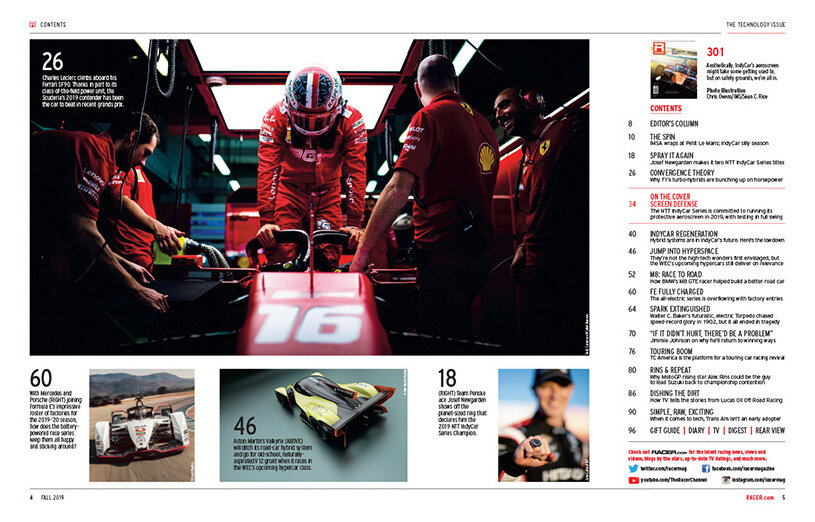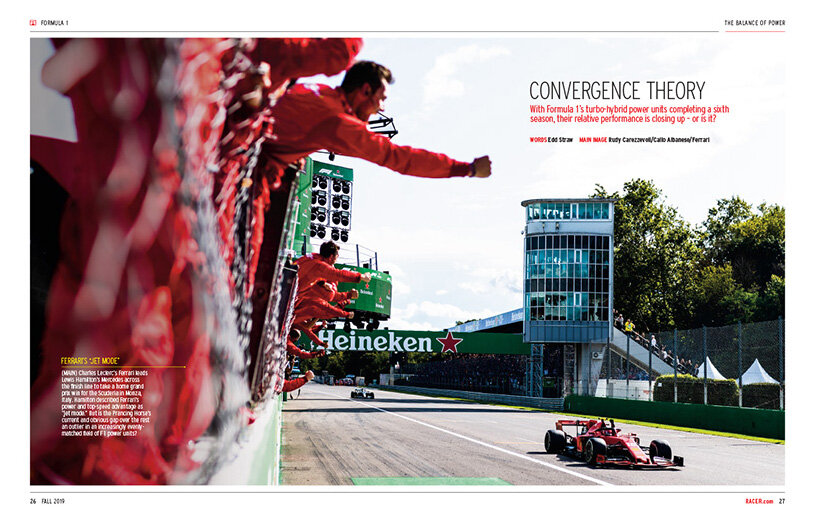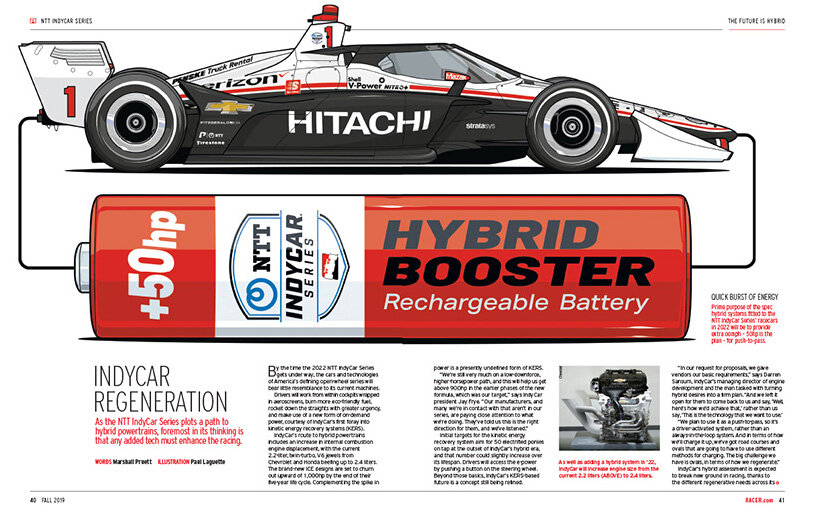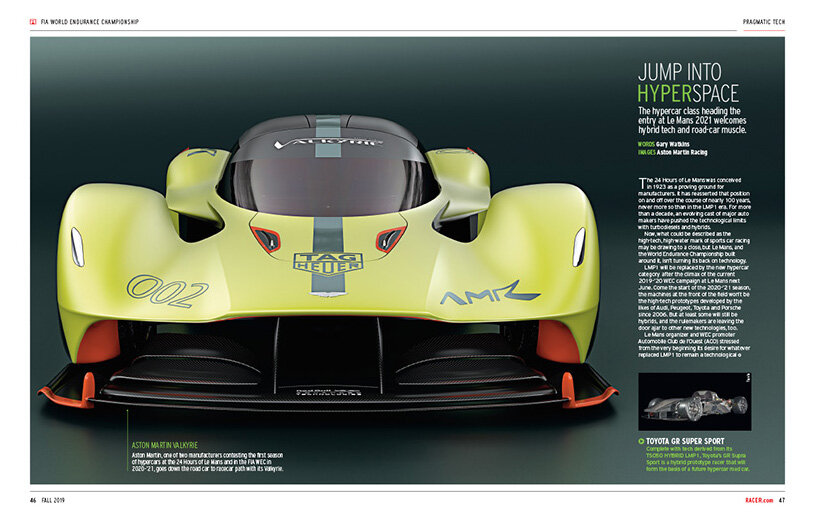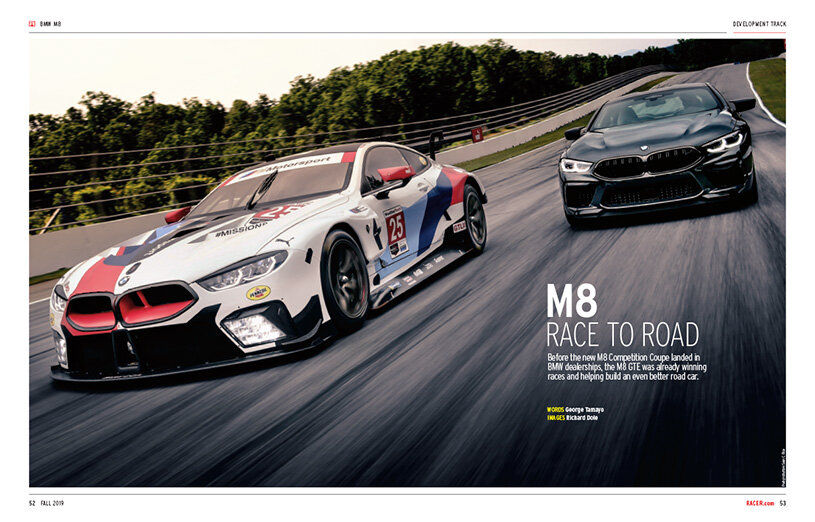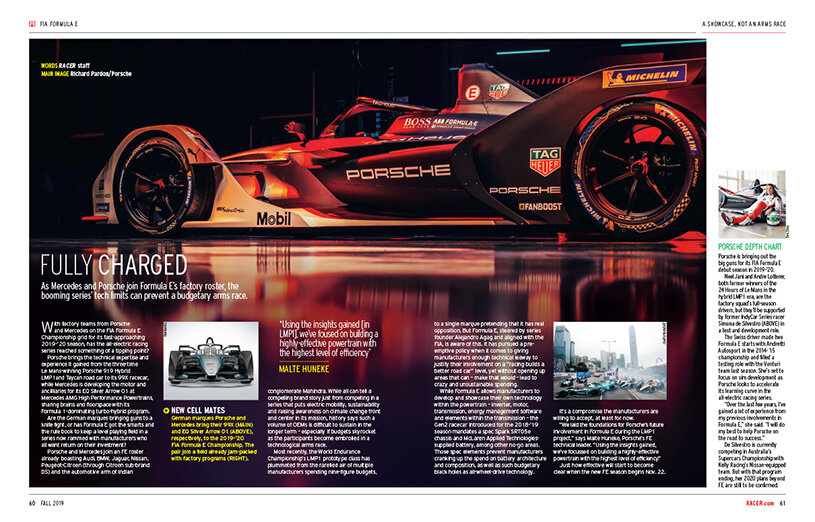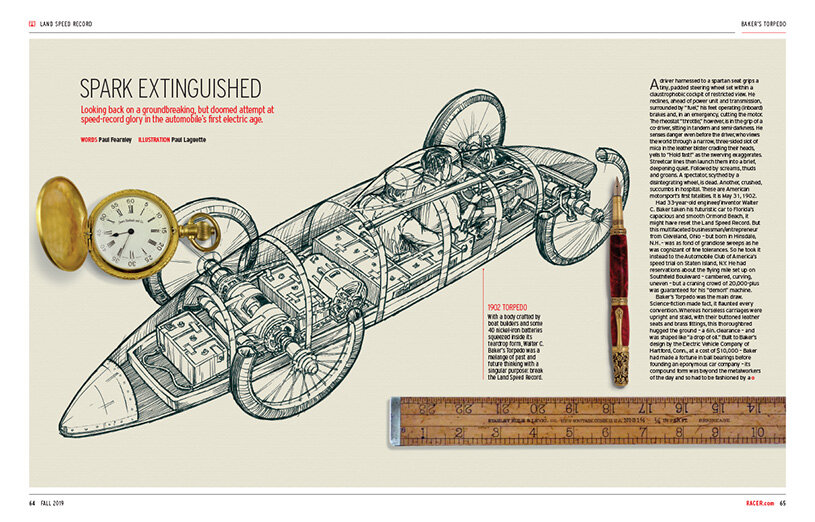Number 301: The 2019 Technology Issue
When so many major auto racing series are either dumbing down on relevant technology, ditching it on cost or competition grounds, or applying it only in spec form, filling RACER’s annual Technology Issue presents us with a conundrum. We’re all in on any efforts to keep motorsports economically sustainable, but we also want it to be a catalyst and an incubator for tech – a leader, not a follower.
This time around, we’re showcasing a couple of technology initiatives that we feel strike a balance between moving the tech needle a little, while still keeping budgets in the real world.
The hypercars that will replace LMP1 prototypes as headliners at the 24 Hours of Le Mans and the wider World Endurance Championship, beginning the fall of 2021, came from a conceptual starting point of no-holds-barred, hybrid-centric technology.
That’s been diluted by the reality of finding manufacturers, large or small, to play. But in the end, a workable compromise seems to have been reached. Toyota still gets its hybrid system, albeit a step down in complexity from the LMP1-dominating TS050 HYBRID’s two-axle system, while Aston Martin is allowed to ditch its hybrid system altogether for the race version of its Valkyrie. Meanwhile, the WEC’s rulemakers say they will accommodate any manufacturer pitching up with an alternative form of motive power and looking for a place to race.
In the NTT IndyCar Series, the regenerative energy system set to feature in its 2022 powertrains will be a single-source – yes, that means spec – system. But the interesting technological twist will be how it harvests energy on superspeedways, given the distinct lack of braking during a 220mph-plus lap of Indianapolis Motor Speedway. IndyCar is asking potential suppliers to offer solutions and it should be fascinating to see what the final choice of system is. RACER’s tech guru Marshall Pruett sets the scene.

